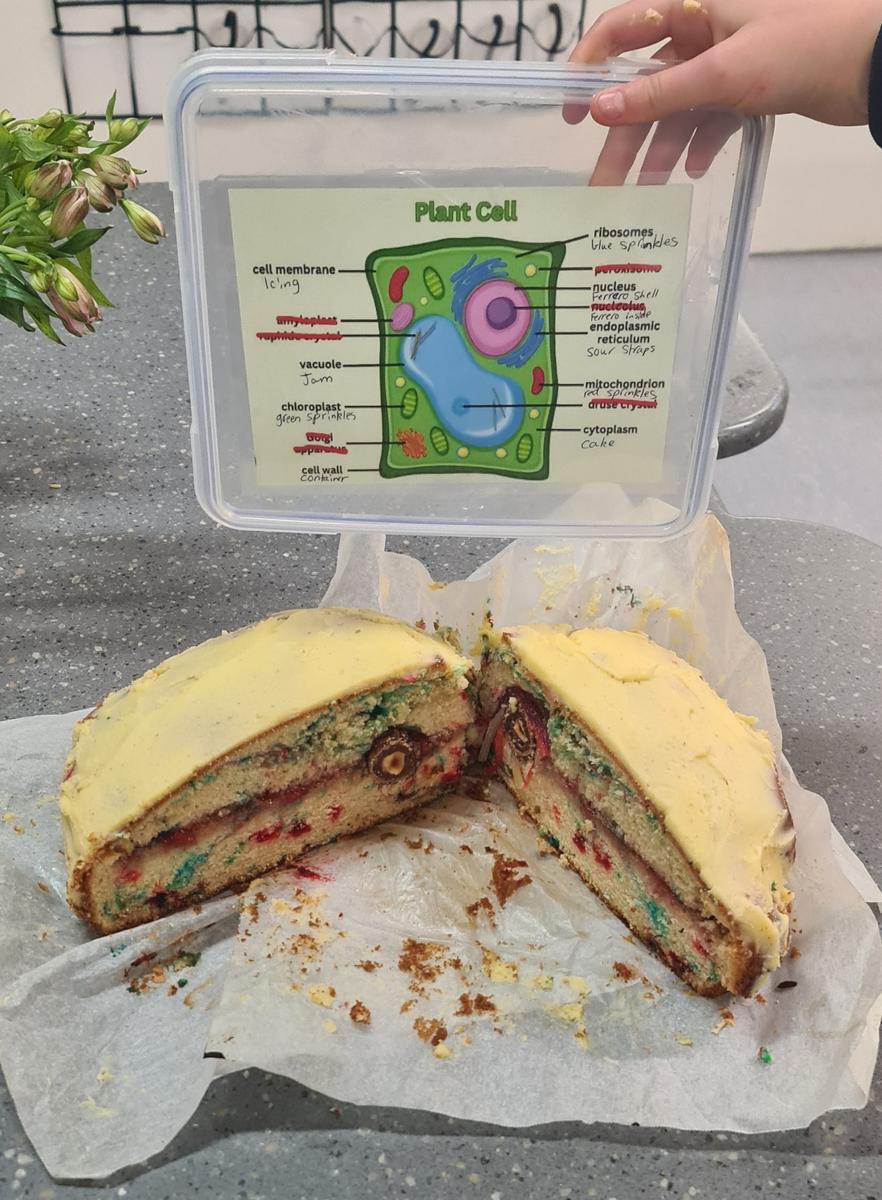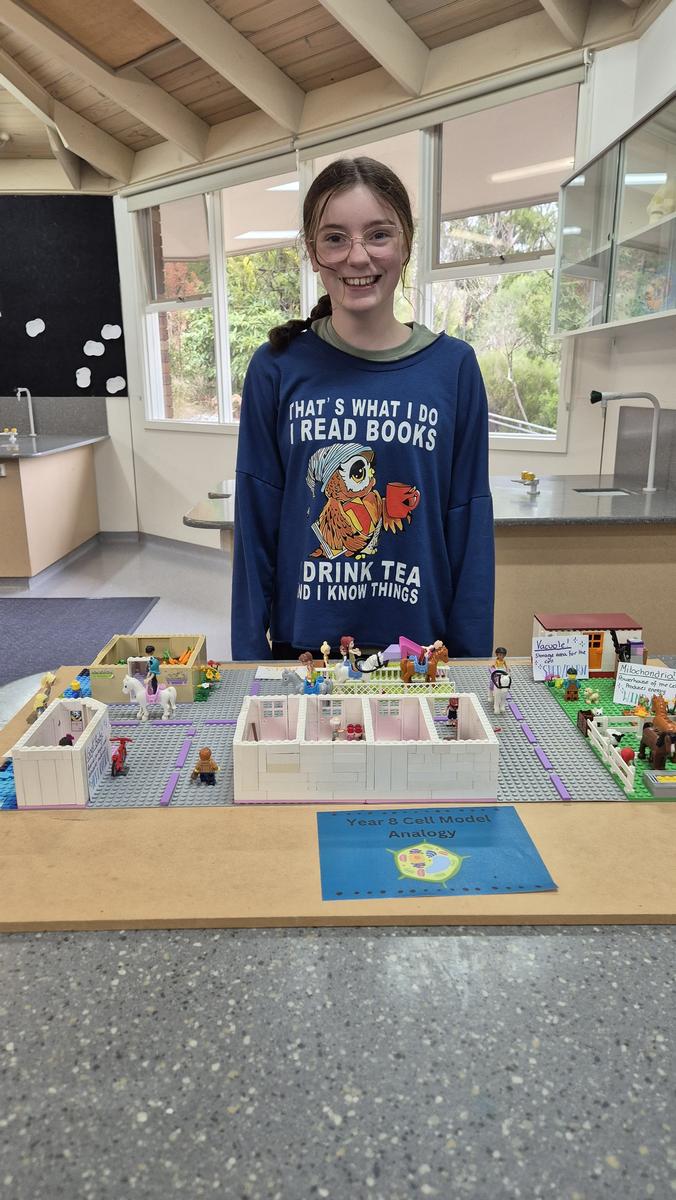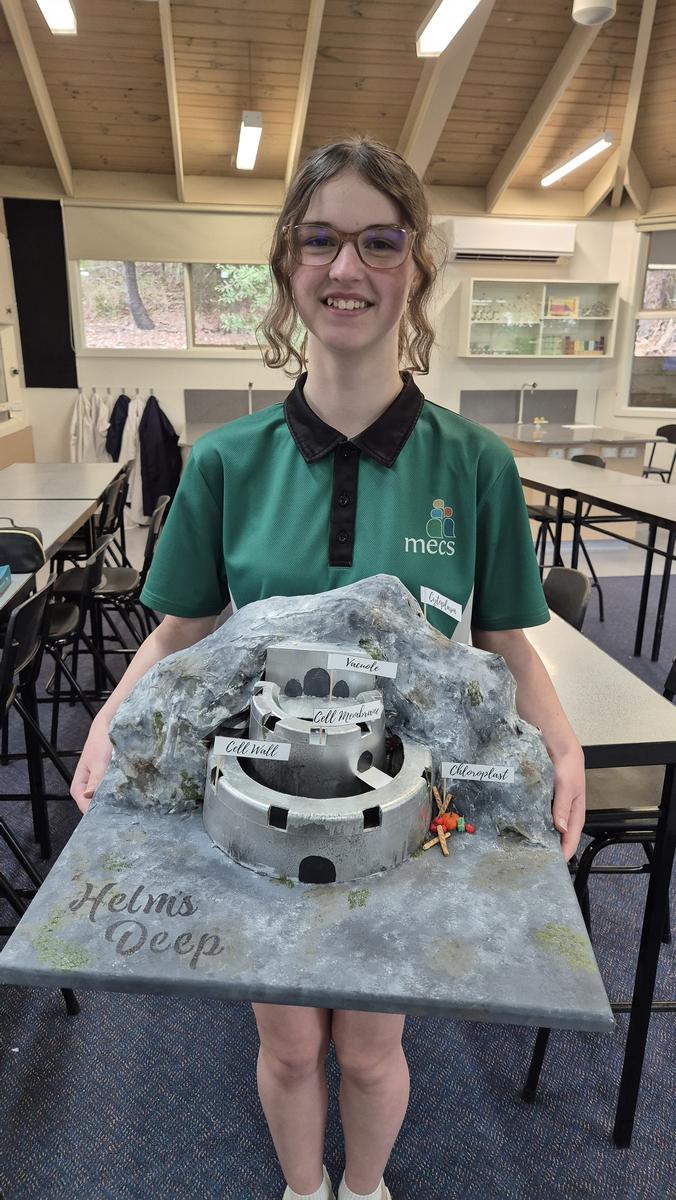Year 8 Science Cell Models

In Psalm 139, the psalmist declares that we are fearfully and wonderfully made, woven together in the secret place by the hands of our creator God. This poetic description of 'Fearfully and Wonderfully Made' is the Biblical Signpost for our Year 8 Science curriculum this semester. In Year 8 Science we learn that the human body is made up of cells, displaying God's order and organisation in the way he creates living creatures. As part of this, the students come up with a cell model to describe the features of a cell.
Starting with a prompt: "The cell is like a(n)...", students go on to come up with an analogy to describe a cell and its organelles and produce a model of that analogy. In doing so, students demonstrate understanding for the structure and function of cell organelles and analyse how the components work together. Here are some descriptions of cell models by a number of our Year 8 students.
Duc Tran
Secondary Teacher
Jasmine K (Cake analogy)
We were tasked with making a model representing either a plant or animal cell. I chose to do a plant cell, and my representation was a cake! It was vanilla Funfetti (though the colour from the sprinkles bled into the cake) with jam in the middle and a Ferrero Rocher as the nucleus and sour straps for the ER. It was super fun to make, and I hope that my class liked it! I loved the cell unit we did in science!
Emily K (LEGO Town)
Everything in life plays a part, whether it’s the sun providing light the plants providing food, or the animals roaming the Earth. Everything is important to sustain the world cycle. This is what I have tried to show in my cell model of a town. A town filled with many people who each play a part. A cell filled with many organisms that each perform a particular function. The nucleus in a cell is like a mayor in a town-it controls what happens and is in charge of directing the cell/town to their rightful jobs. The supermarket or the chloroplast both provide food for all the organisms or people. And so on. God has created everything in such detail, even down to the cells and this is what I have tried to recreate here.
Asher C - (Lord of the Rings analogy)
Asher chose to do a diorama of Helm's Deep from Lord of the Rings: The Two Towers, to represent a plant cell. The outer wall represents the cell wall of a plant, which gives structure and protection to the rest of the cell. The chloroplast, which produces glucose, is represented by the food depot. The courtyard represents the vacuole, and the cytoplasm is represented by stone, a material that is used to build Helm's deep. - Description by Duc Tran.
Edward K (laptop analogy)
Edward chose to use a laptop as an analogy for an animal cell. The cell membrane is represented by the case, the systems app represents the nucleus, the Windows file explorer represents the vacuole for storage, and the battery represents the mitochondria, which provides energy to the cell. - Description by Duc Tran.
Emilia M (classroom analogy)
My cell analogy is a replica of the 8B classroom and it represents a cell by the classroom walls acting as a cell wall and so on. The way the different people and things in the classroom act as different organelles that make up a cell. It helped my learning by helping me grasp the concept and the inner workings of a cell. I enjoyed it because of the creativity and hard work I got to put into it.


